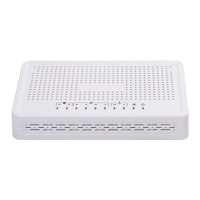ESR series service routers.ESR-Series. User manual
esr# show security ipsec vpn status
Name Local host Remote host Initiator spi
Responder spi State
------------------------------- --------------- --------------- ------------------
------------------ -----------
ipsec1 198.51.100.1 203.0.113.1 0x7a77a25a55853255
0xb62fd04f2db43d08 Established
2037-10-30T07:52:53+00:00 %CLI-I-CMD: user admin from console input: show security ipsec vpn
status
esr# show security ipsec vpn status
Name Local host Remote host Initiator spi
Responder spi State
------------------------------- --------------- --------------- ------------------
------------------ -----------
ipsec1 198.51.100.1 203.0.113.1 0x77706e37b4e68cce
0x0000000000000000 Connecting
2037-10-30T07:52:57+00:00 %CLI-I-CMD: user admin from console input: show security ipsec vpn
status
9.5 LT tunnels configuration
LT (Logical Tunnel) is a type of tunnels dedicated for transmission of routing information and traffic between
different virtual routers (VRF) configured on a router. LT tunnel might be used for organization of interaction
between two or more VRF using firewall restrictions.
9.5.1 Configuration algorithm
Step Description Command Keys
1 Create LT tunnels for each of existing
VRF.
esr(config)# tunnel lt <ID> <ID> – tunnel identifier, set in
the range of [1..128].
2 Specify the description of the
configured tunnels (optional).
esr(config-lt)# description
<DESCRIPTION>
<DESCRIPTION> – tunnel
description, set by the string of
up to 255 characters.
3 Include each LT tunnel in the
corresponding VFR.
esr(config-lt)# ip vrf forwarding
<VRF>
<VRF> – VRF name, set by the
string of up to 31 characters.
4 Include each LT tunnel in a security
zone and configure interaction rules
between zones or disable firewall for LT
tunnel.
esr(config-lt)# security-
zone<NAME>
<NAME> – security zone name,
set by the string of up to 12
characters.
esr(config-lt)# ip firewall disable
5 For each LT tunnel, set the opposite LT
tunnel number (in another VRF).
esr(config-lt)# peer lt <ID> <ID> – tunnel identifier, set in
the range of [1..128].

